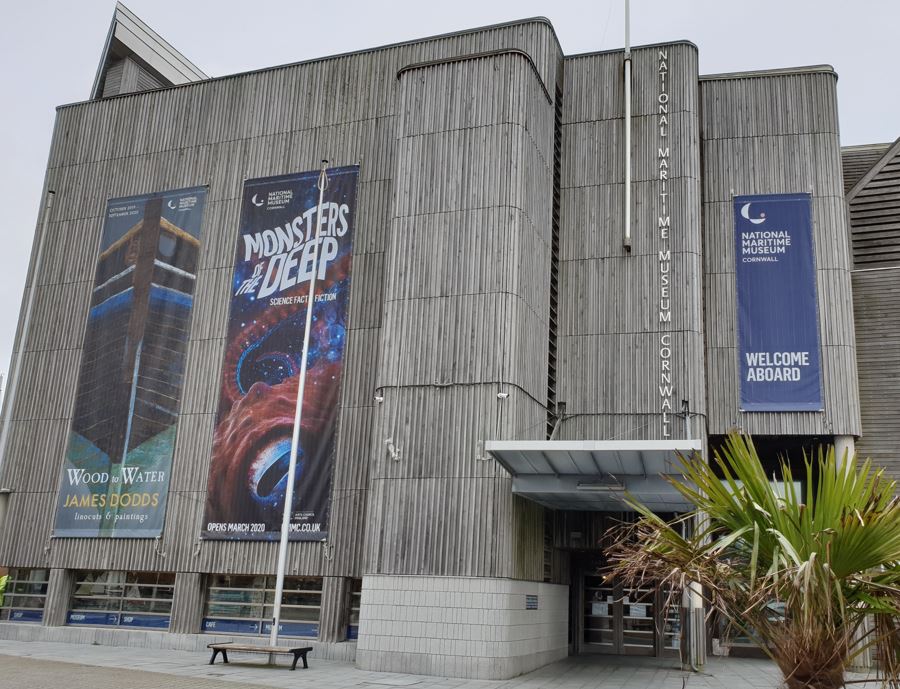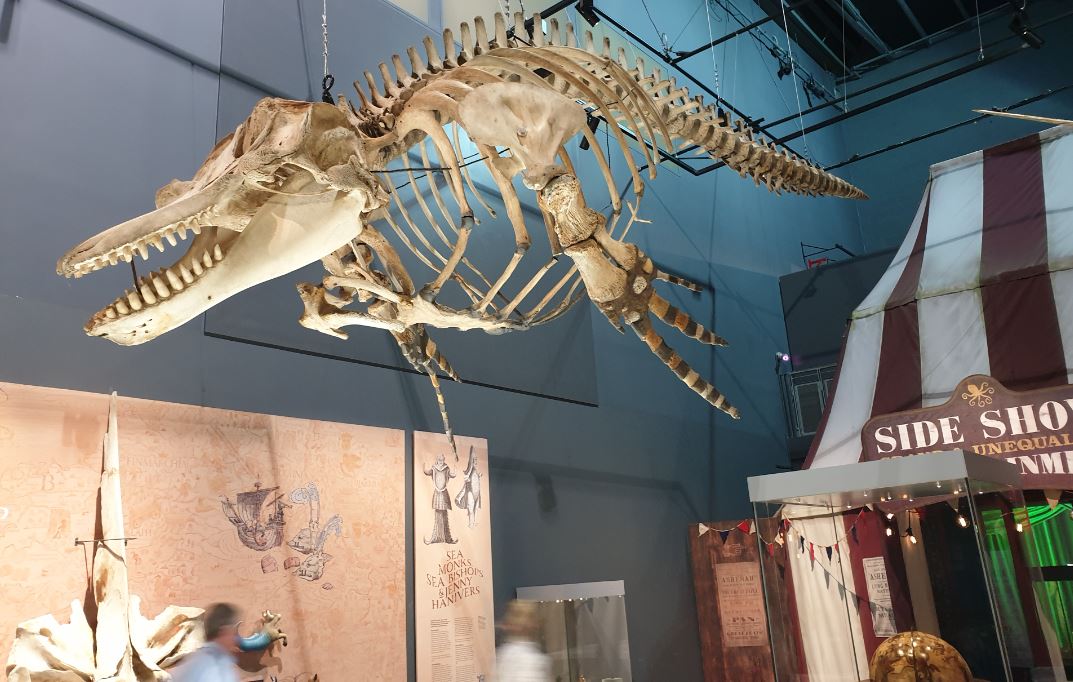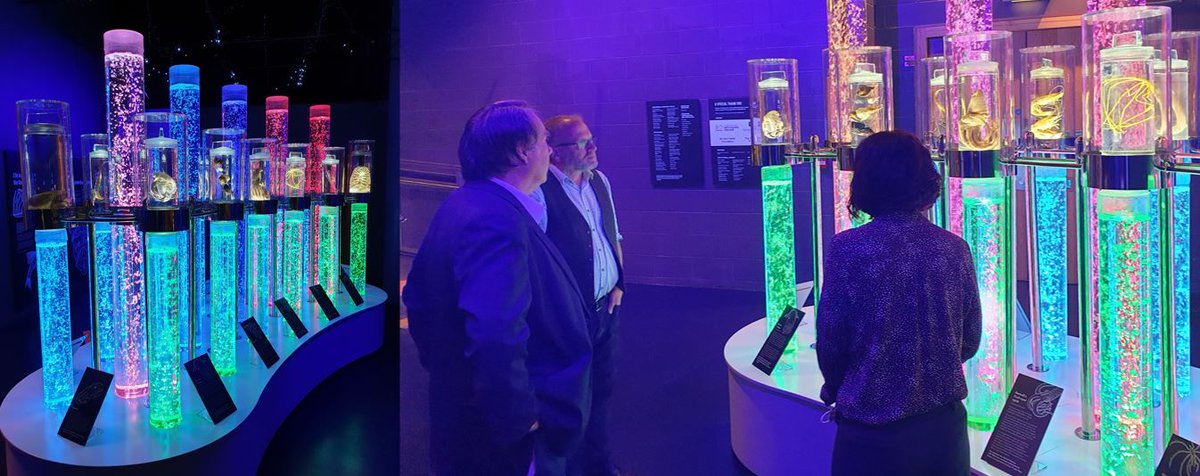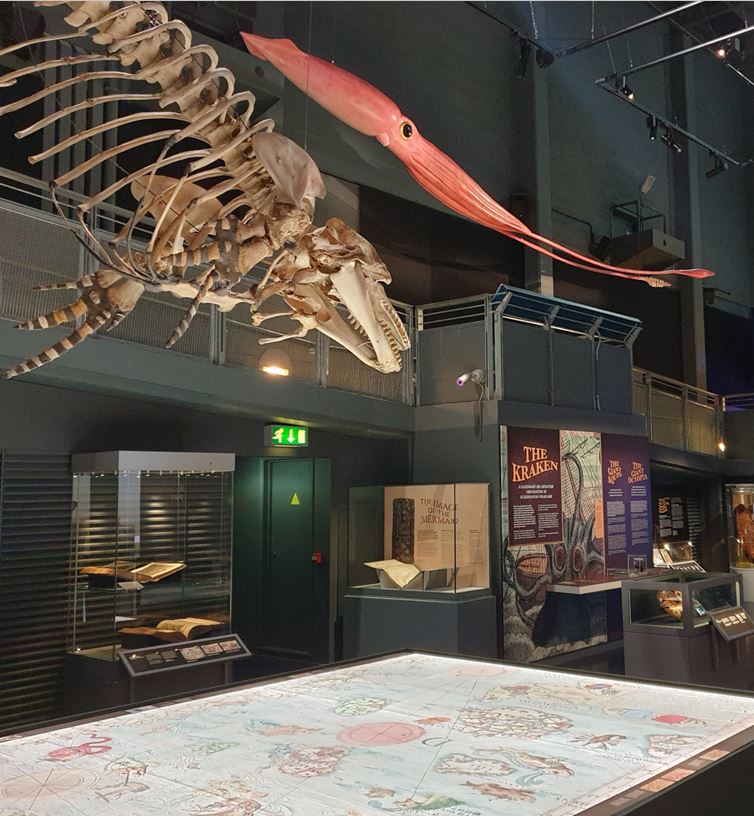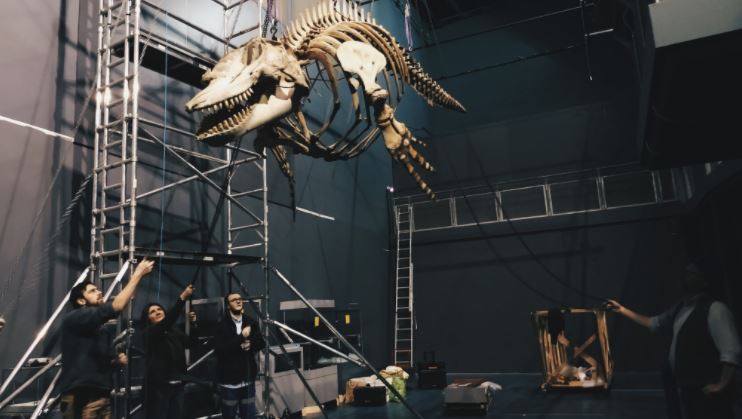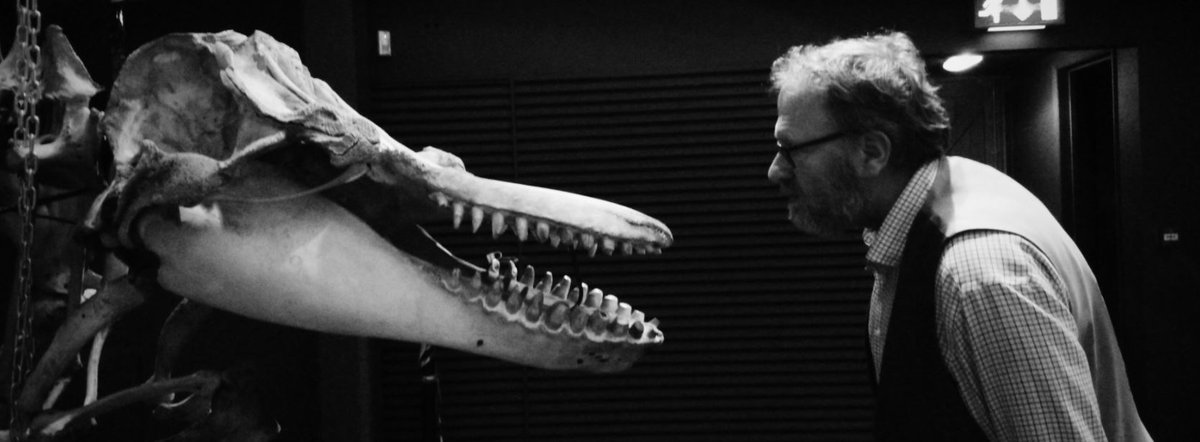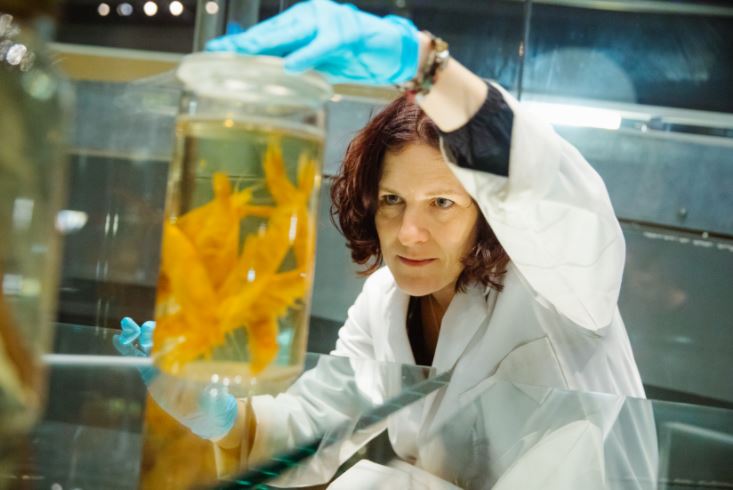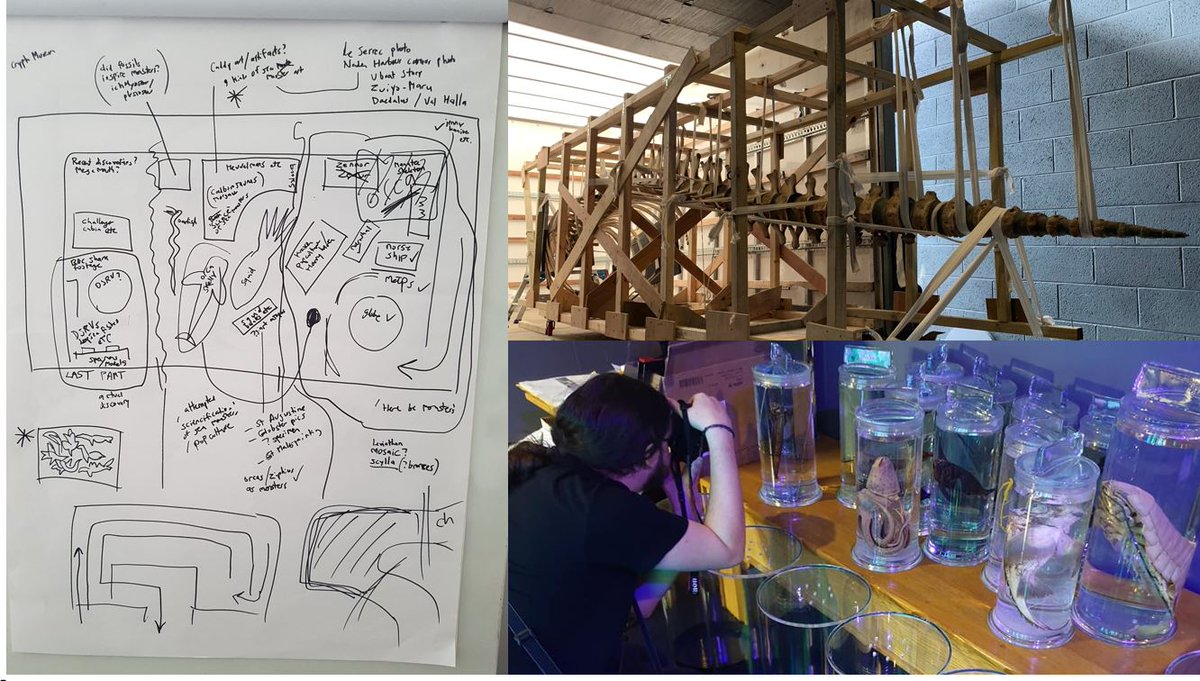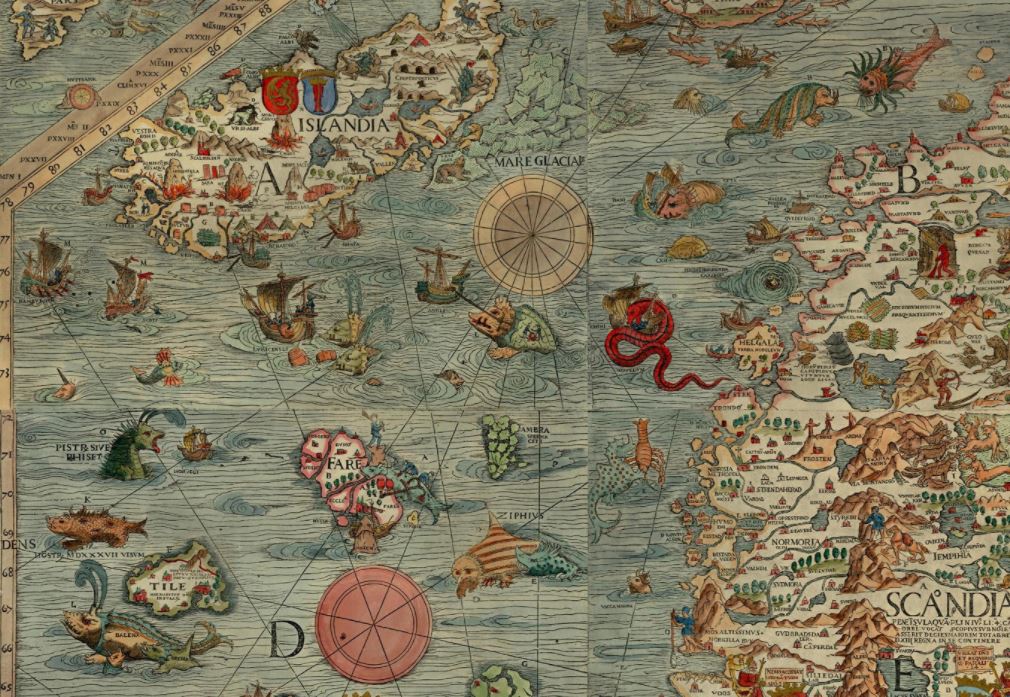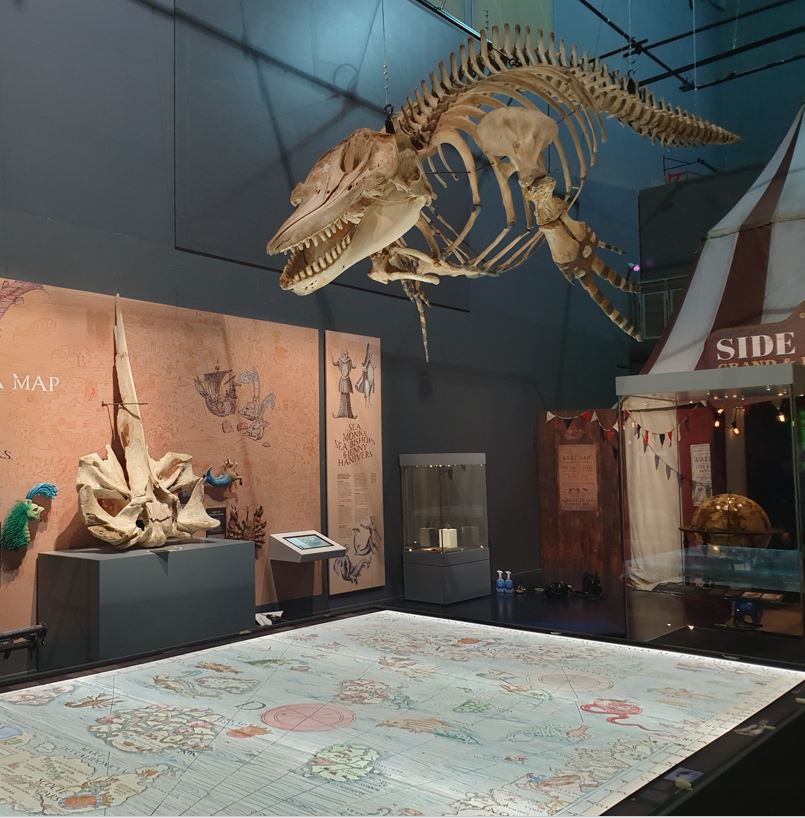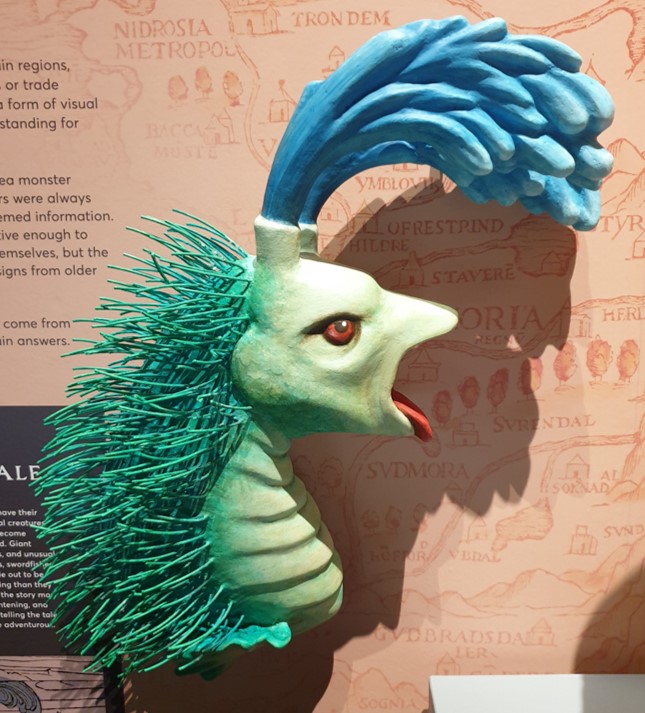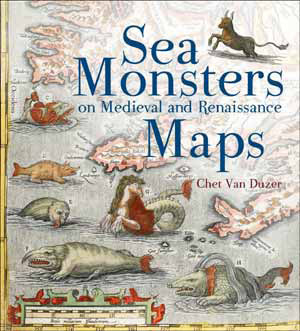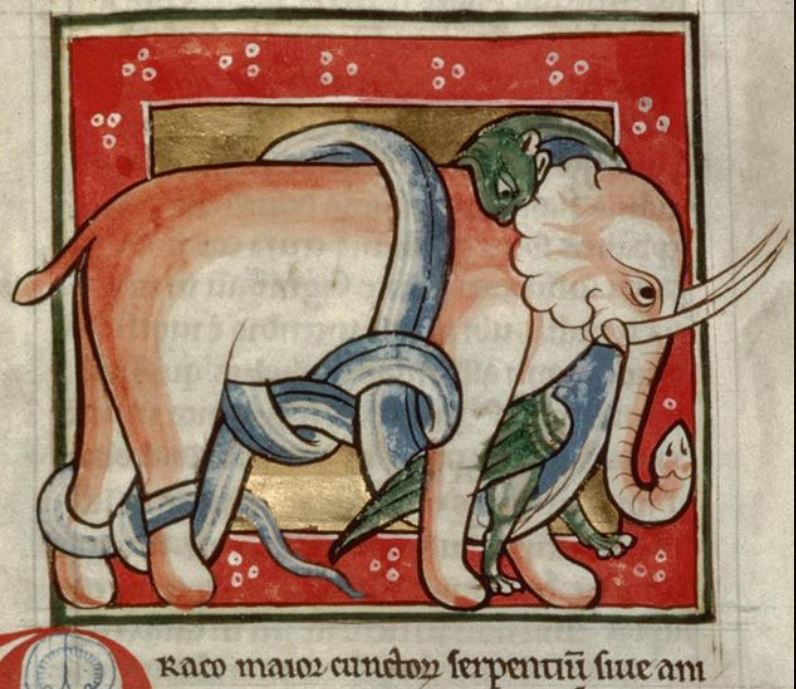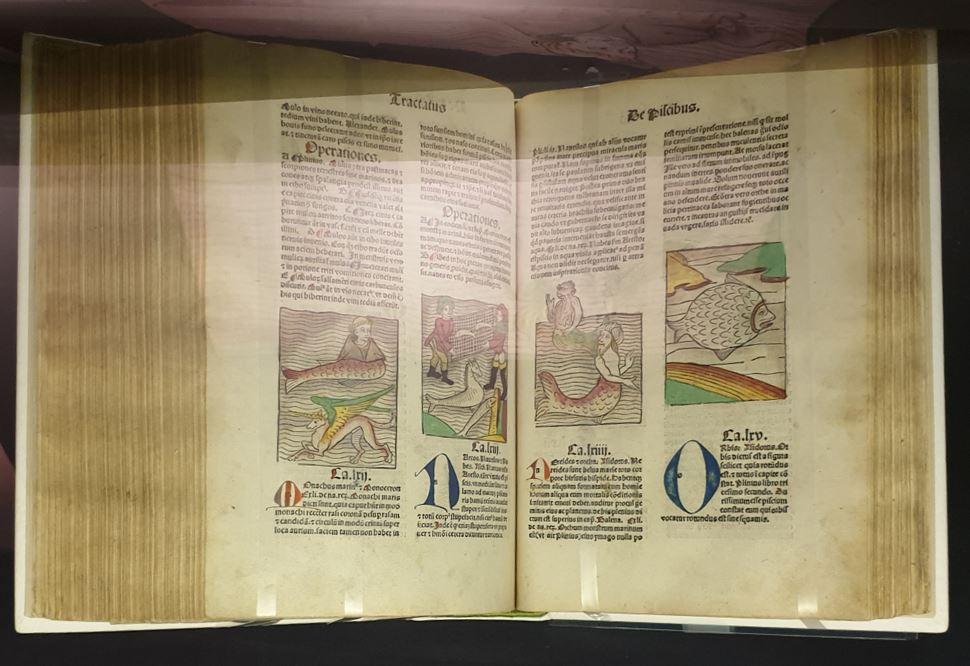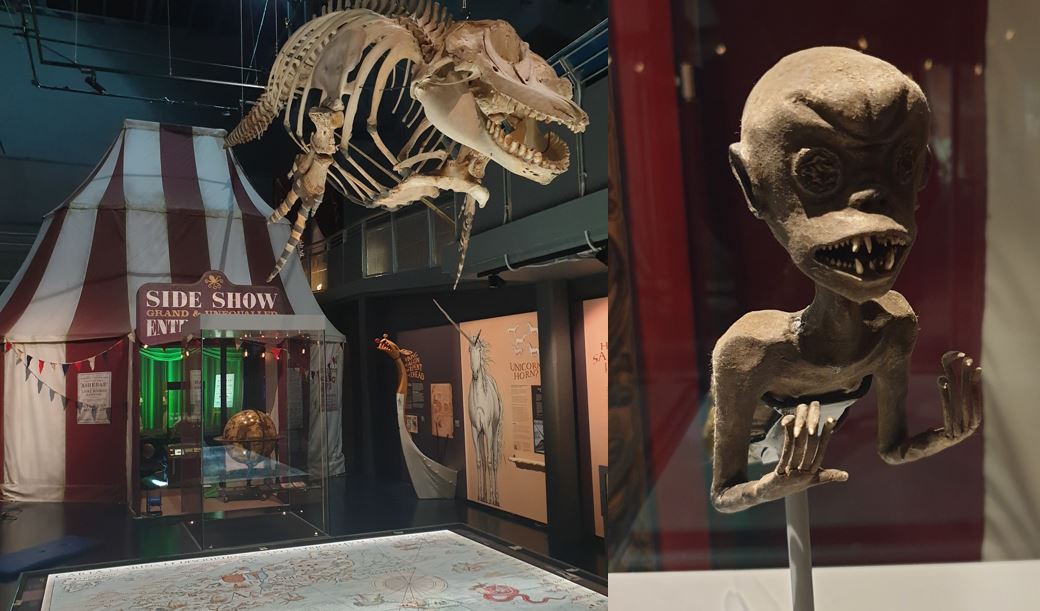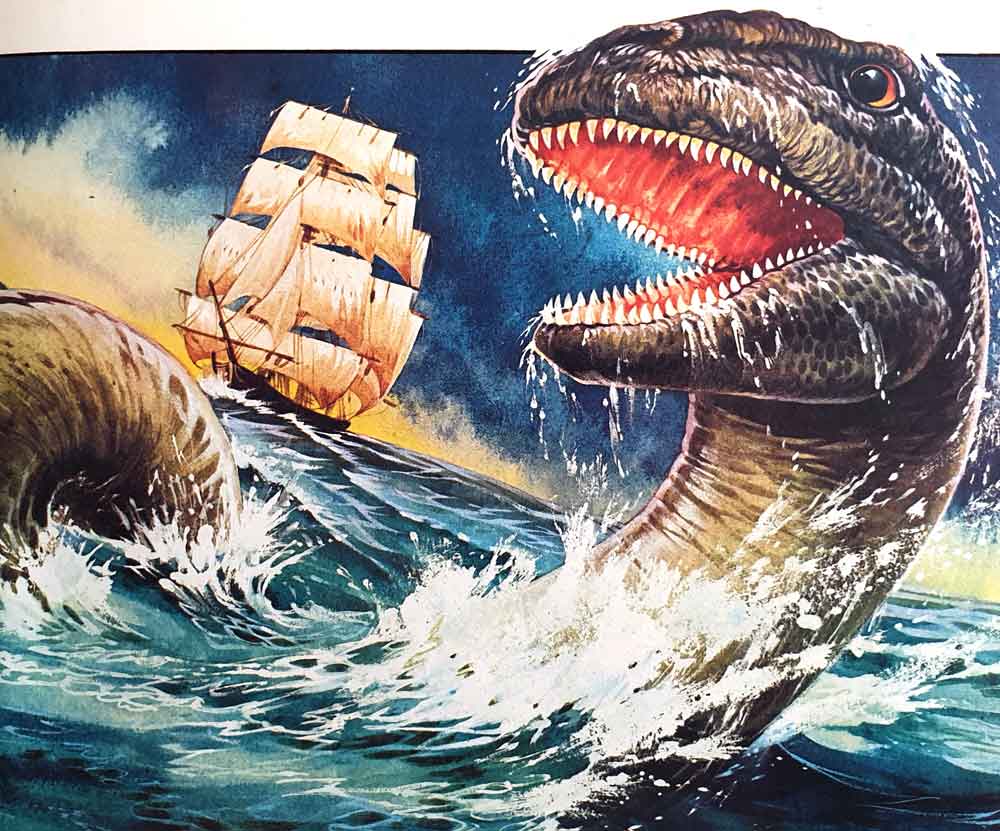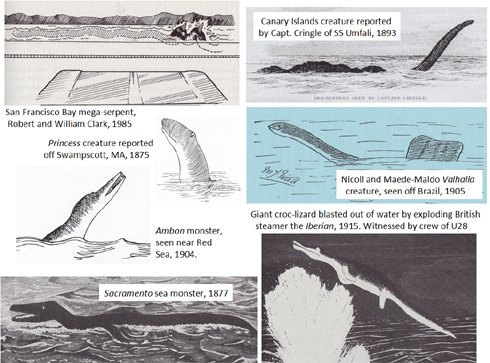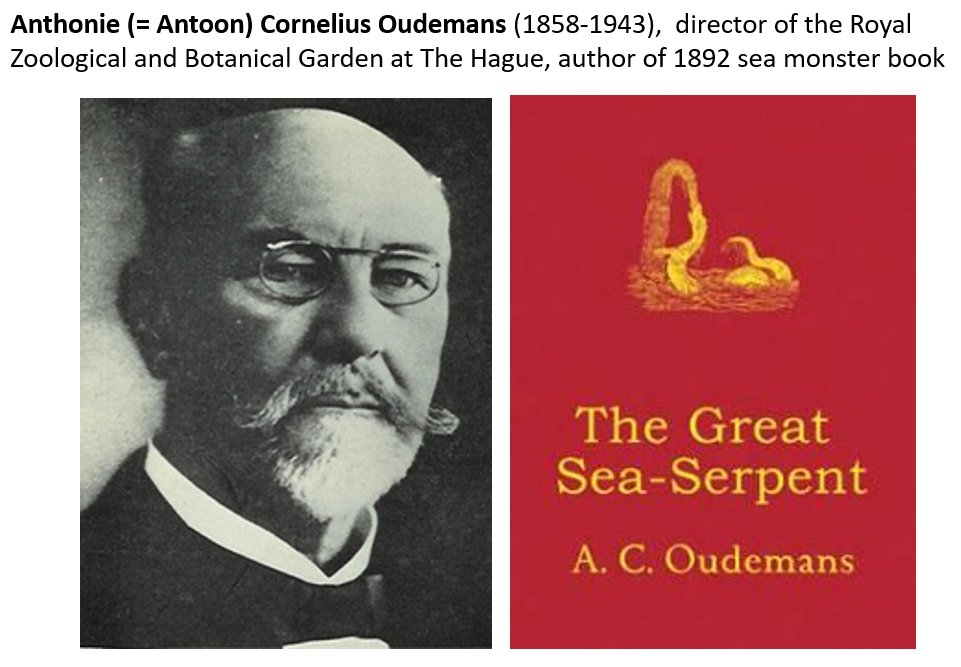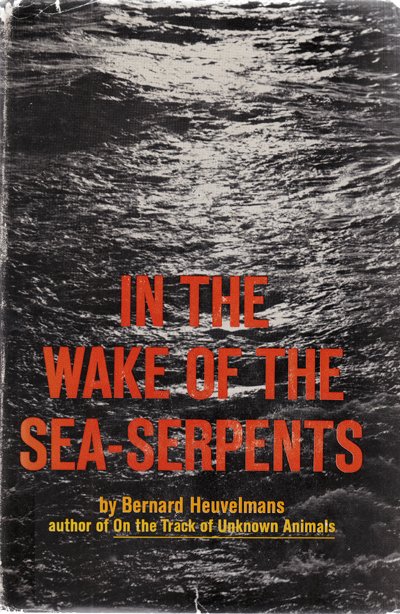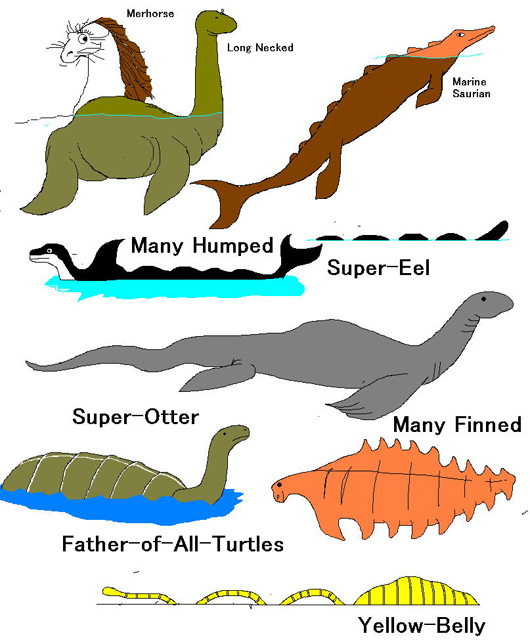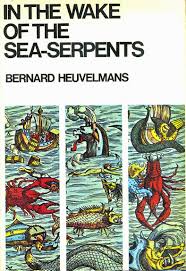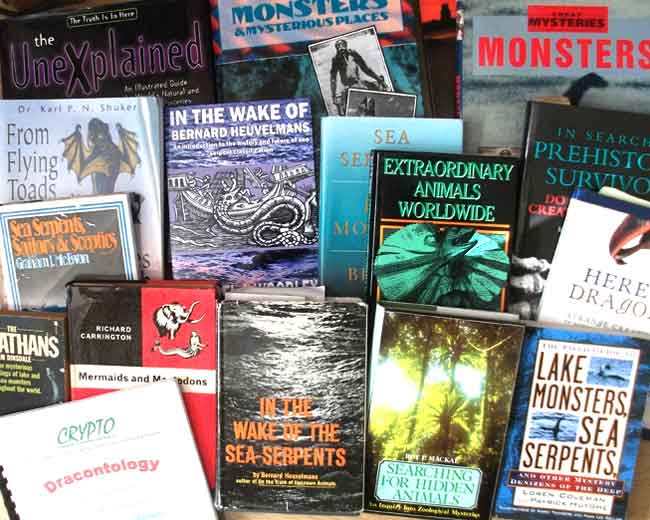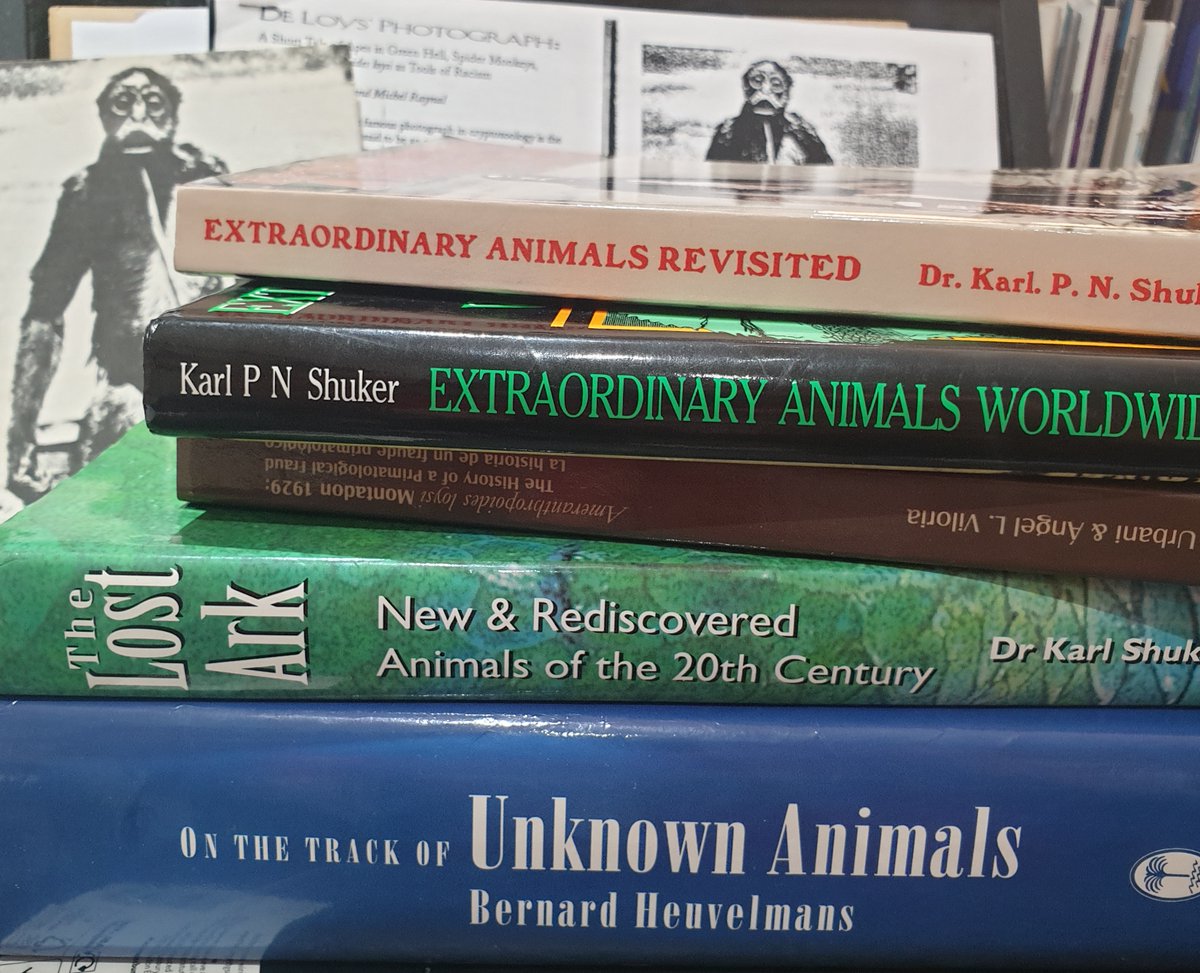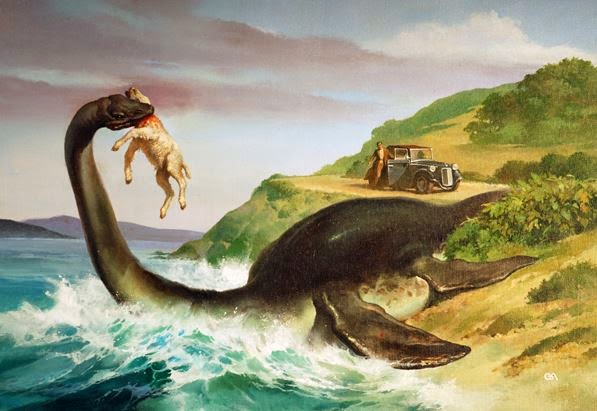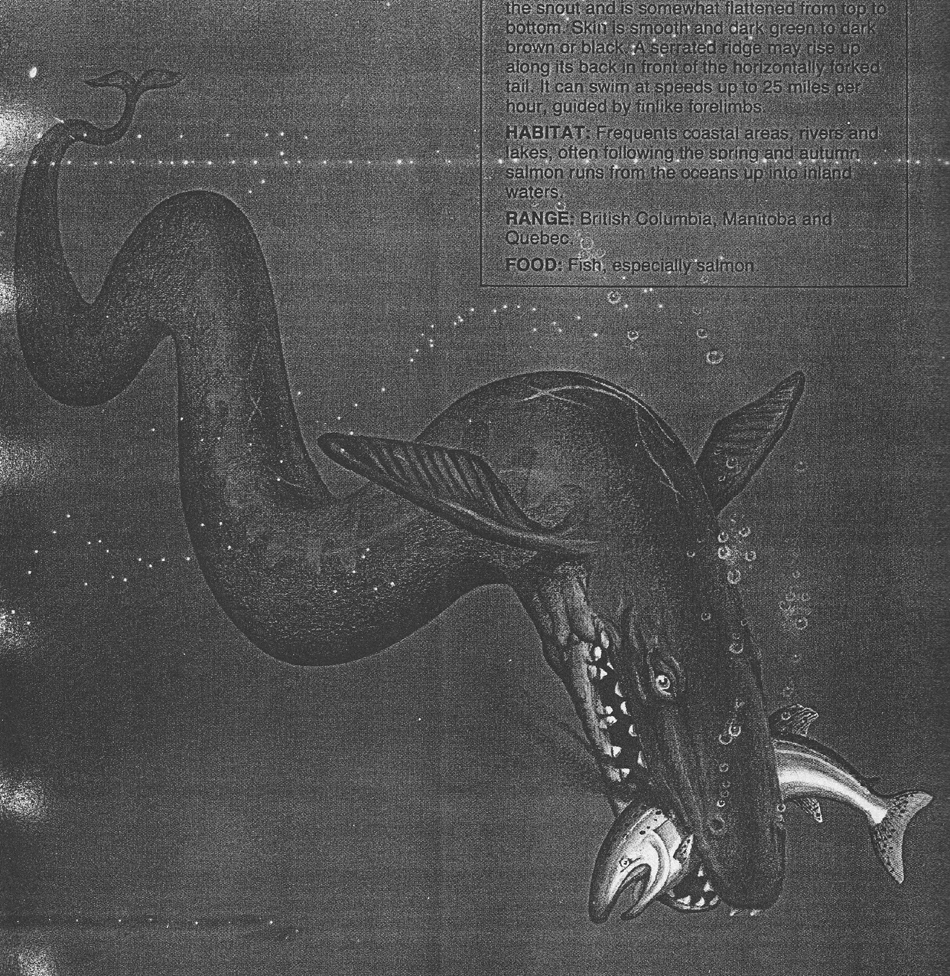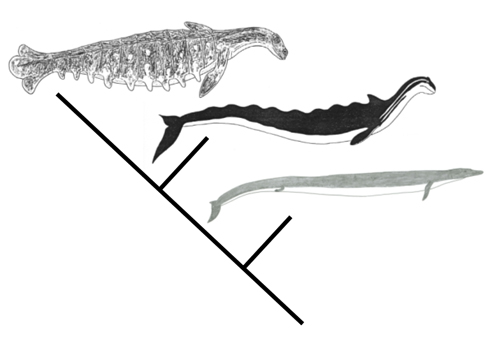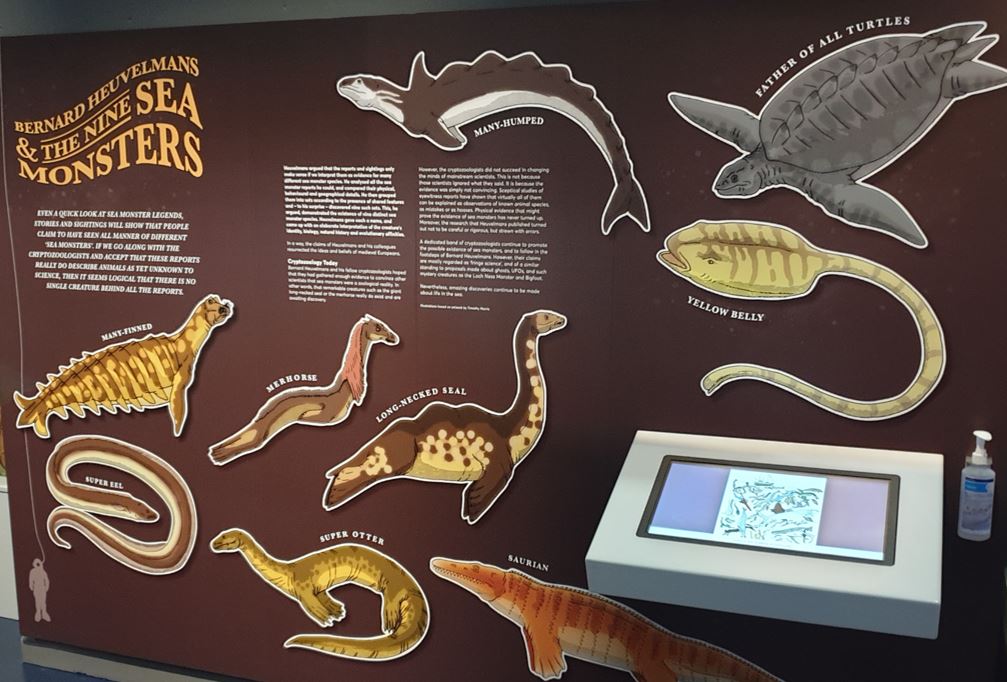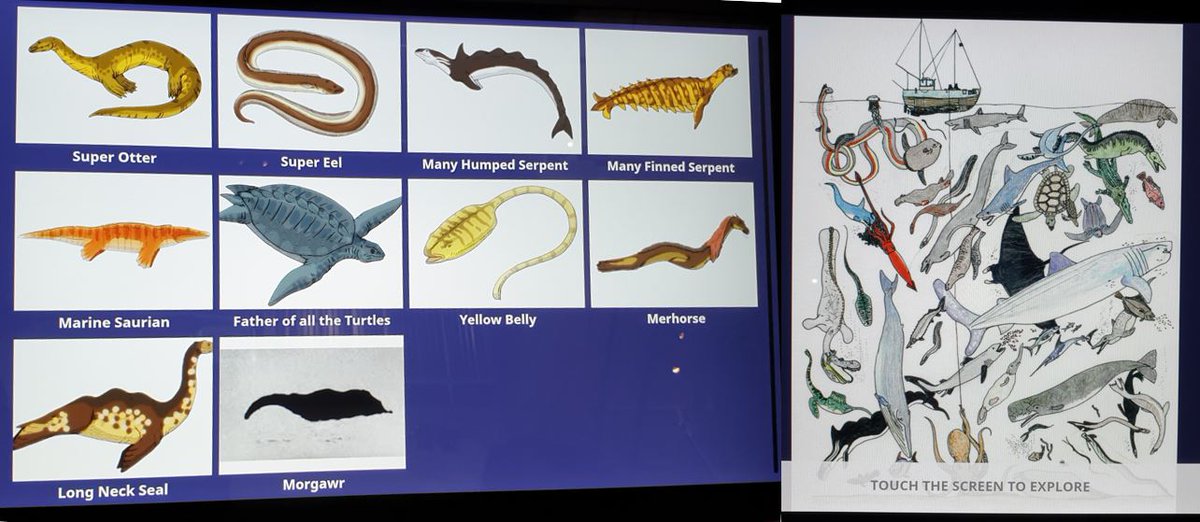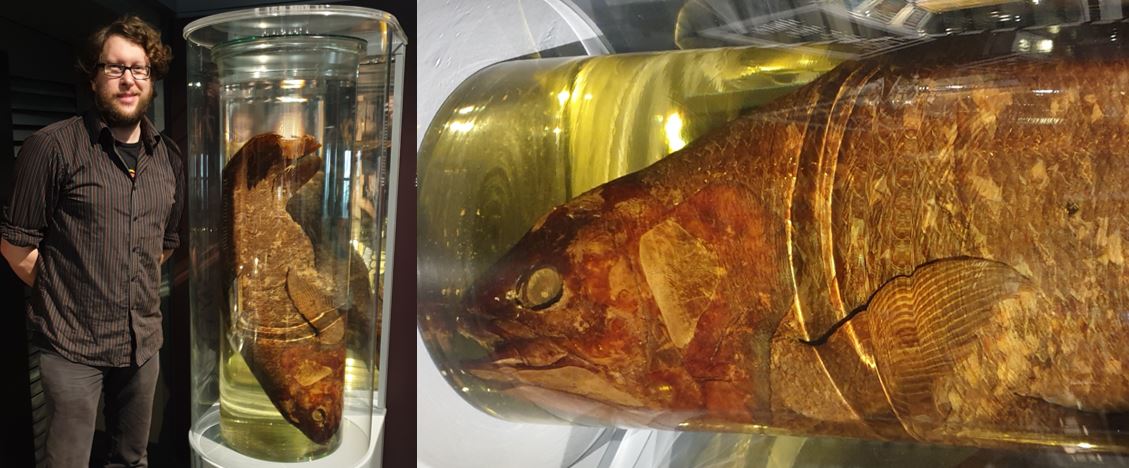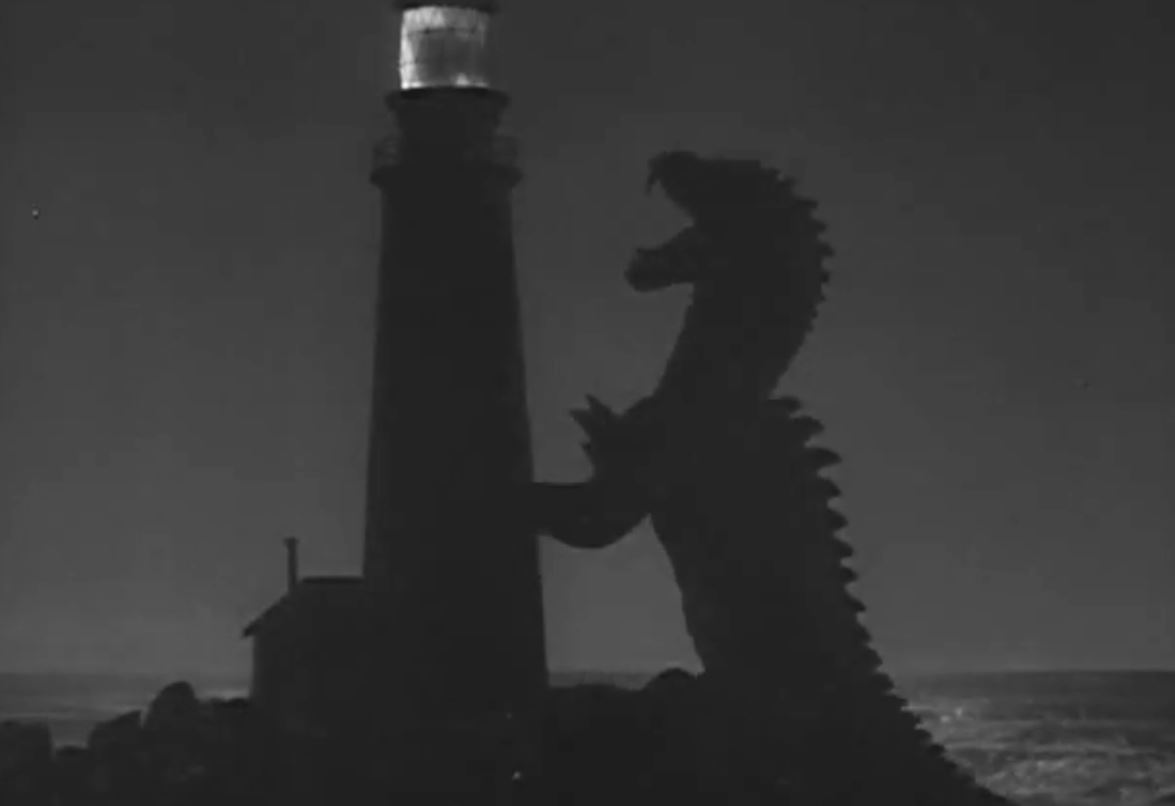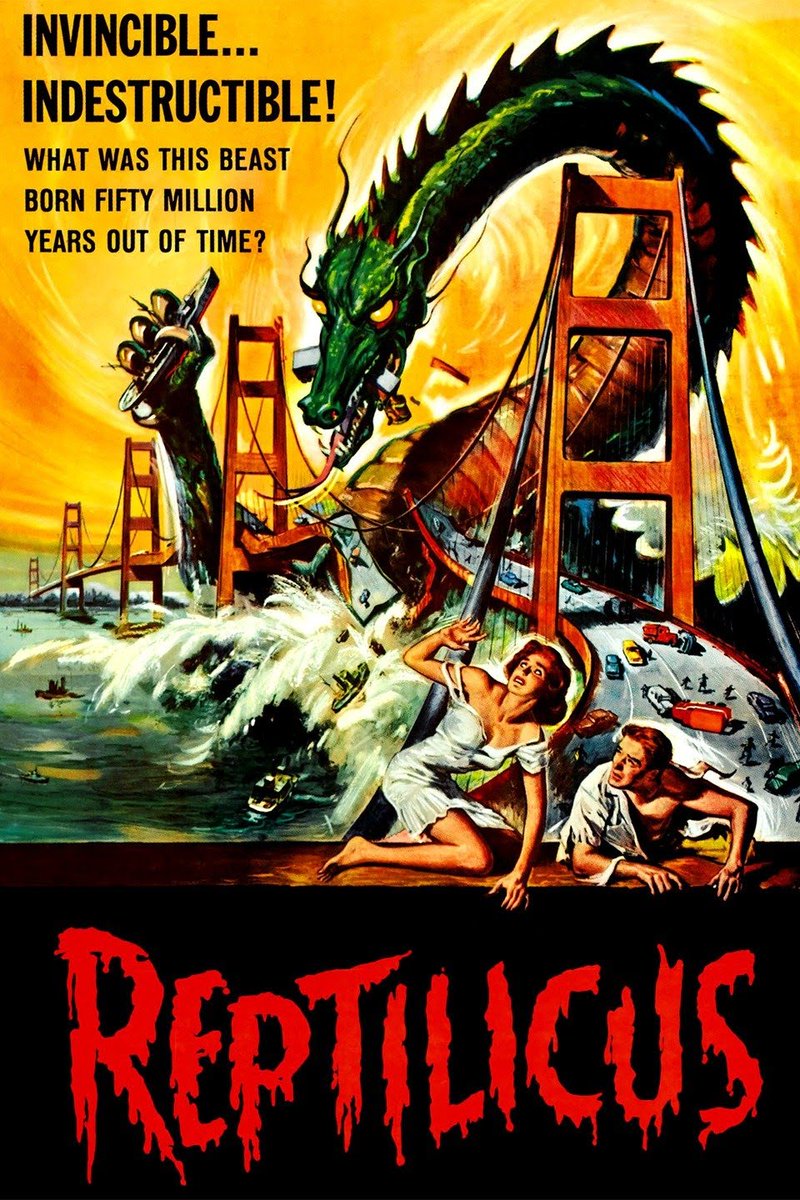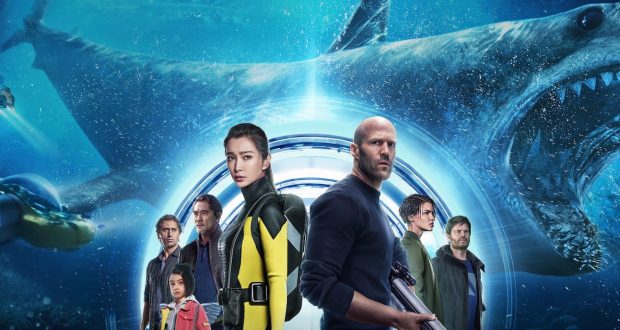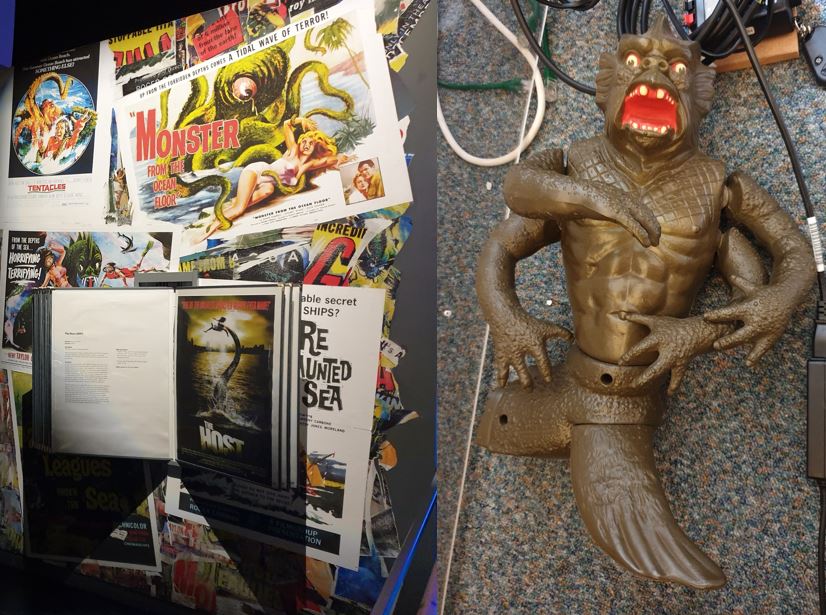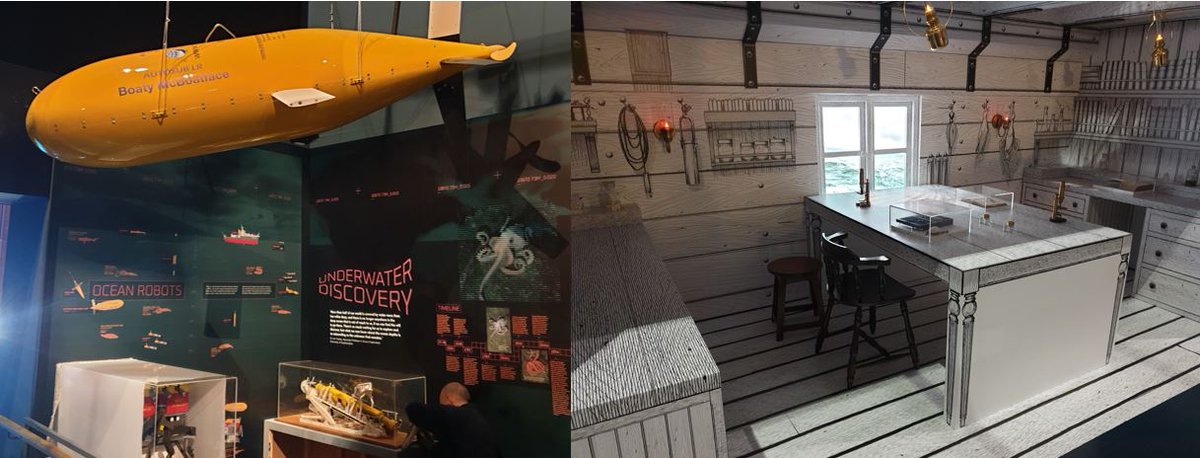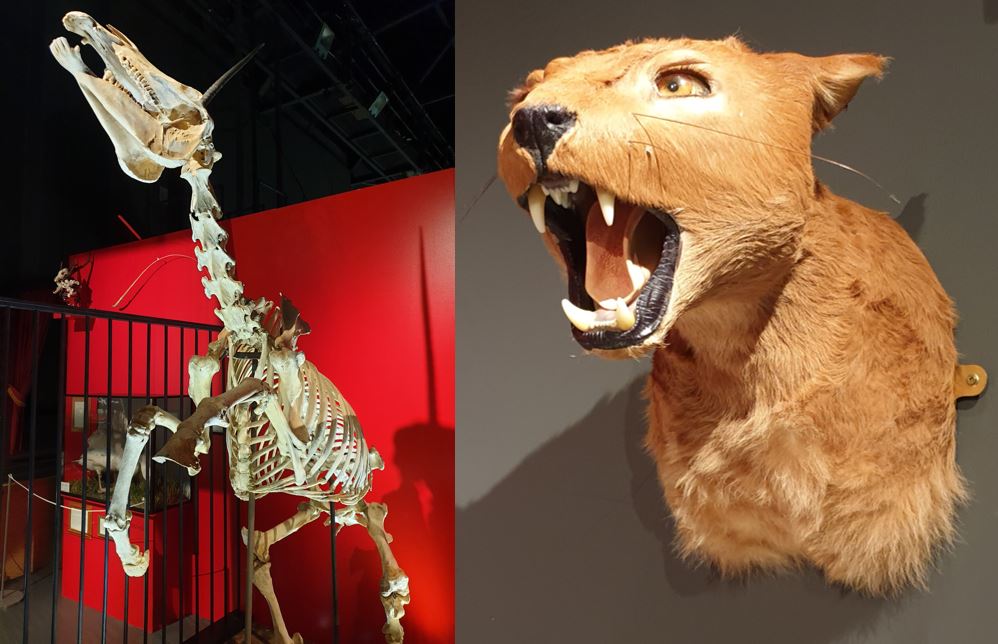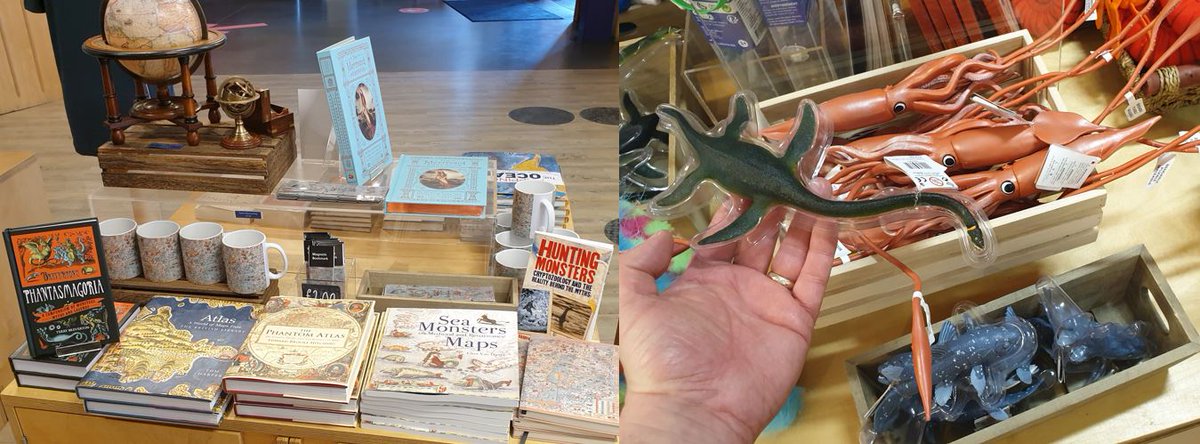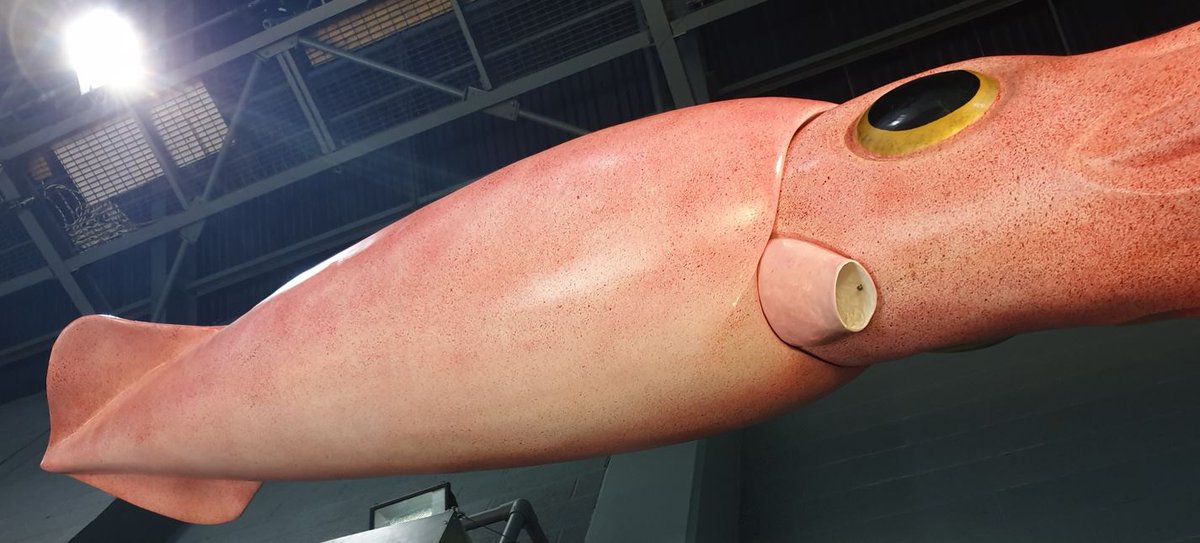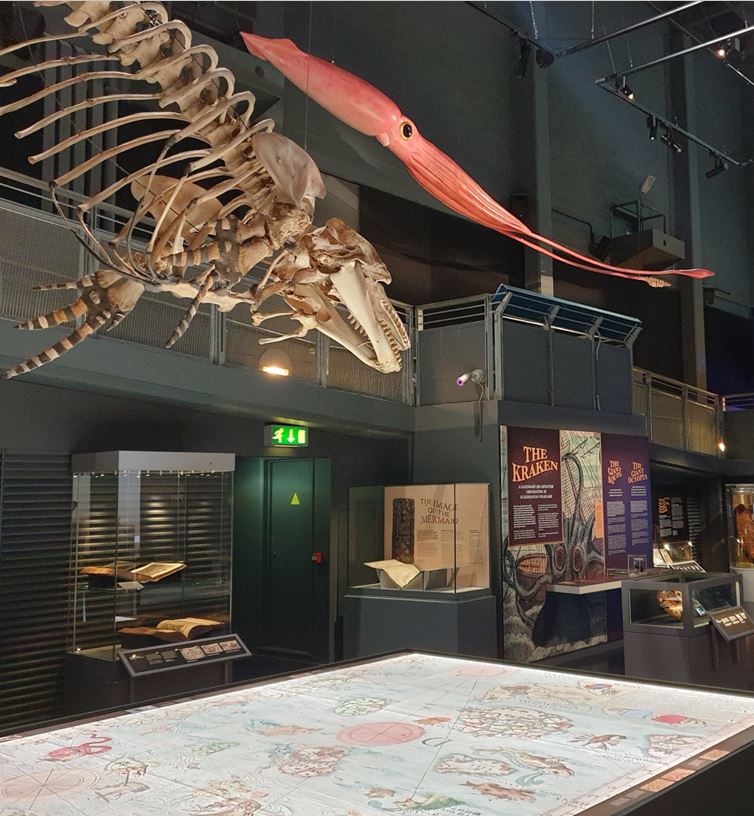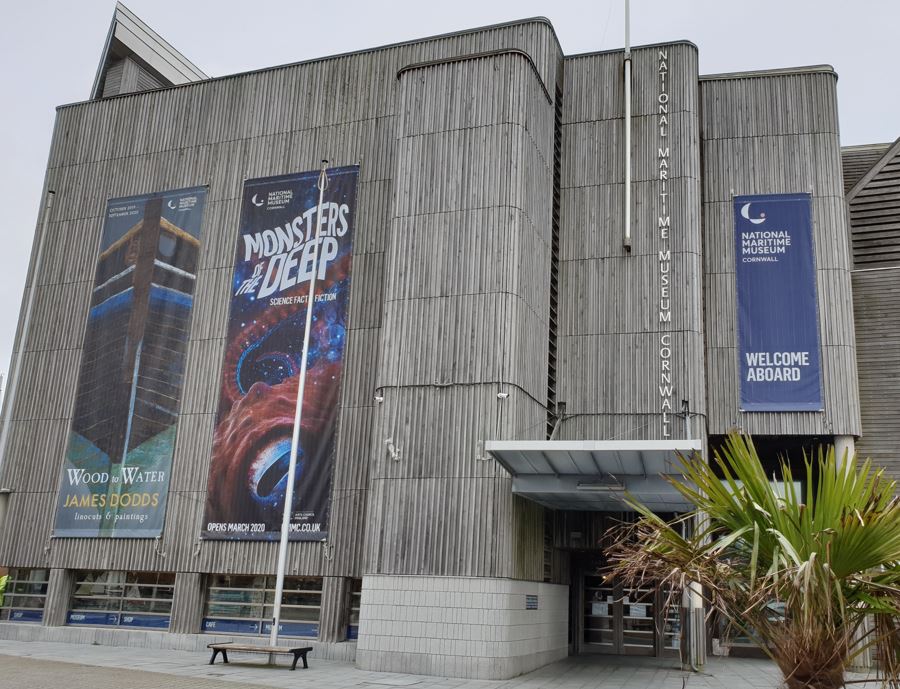It’s time once more for a #TetZoocryptomegathread. But this one isn& #39;t a review of a photo or film, but a walk-through of a #cryptozoology-themed exhibition. I’m talking about Monsters of the Deep, my new exhibition at the National Maritime Museum, Falmouth, Cornwall ( @TheNMMC)...
Yes, I’m very pleased to announce that a major museum exhibition which I – and others – have been putting together over the past few years is now open and available for public viewing....
This is the @NMMC’s most ambitious exhibition, and probably the most technically sophisticated, lavish and exhibit-heavy sea monster-themed exhibition ever produced...
Monsters of the Deep centres around European beliefs, myths and imagery pertaining to sea monsters, but couches it within the broader context of our ideas about what the seas are like...
Our views of centuries past were based on lack of information, hearsay and superstition, but have more recently improved thanks to scientific discovery and exploration....
Monsters of the Deep occupies one of the @NMMC’s largest exhibit spaces, and pulling together the many strands of the exhibition was a huge undertaking, years in the making...
As guest curator, I worked closely with the museum’s co-curator and Head of Public Programming Stuart Slade and with fellow guest curator Dr Tammy Horton of the National Oceanography Centre’s, Southampton... (both shown here)...
... in designing the vision, producing the text and graphics, and organising what we needed to borrow or create. My thanks to @PaoloViscardi for putting my name forward for this project in the first place. Shown here are some & #39;behind the scenes& #39; images...
Right from the start (my work on the exhibition started in July 2018), our plan was to feature a grand section on Medieval views about marine life, the centrepiece being an enlarged version of Olaus Magnus’s Carta Marina of 1539...
By borrowing specimens from the Booth Museum in Brighton, the Science Museum, British Museum and Royal Museums Greenwich in London, and Cambridge University Library, we were able to bring this part of the exhibition to life, and it looks amazing....
The fantastic marine beasts depicted on the Carta Marina all have their own backstories: they’re all connected in some way to ideas or stories prevalent in the literature of the Middle Ages. We explore these with sections on Medieval beliefs about whales, sea unicorns and more..
Part of the justification for the ‘existence’ of sea monsters in the Medieval world wasn’t just that some people claimed to have seen such things...
.... it was also that people regarded the life of the seas as ‘mirroring’ the life of the land (see Chet Van Duzer& #39;s book Sea Monsters on Medieval and Renaissance Maps for more on this theme)...
Ideas about marine, fish-tailed humanoids – merfolk and the like – were not, then, inspired directly and entirely on alleged observations, but were in part based on the idea that such creatures simply _must_ exist. An aside here is that…
... if you believed in the existence of animals like unicorns and snakes big enough to kill elephants, you also had to believe in the existence of marine counterparts of these creatures too...
On that note, we also have on display the Hortus Sanitatis of 1491, a beautifully illustrated encyclopedia which collates zoological and botanical knowledge of its time. Sea monsters appear on some of its pages. Having the Hortus on show in our exhibition is a big deal...
Our section on mermaids explores the fact that persistent beliefs about them were exploited via the ‘sideshow’ tradition that arose in circuses and travelling exhibitions during the 1800s....
And we have our very own #mermaid, a ‘feejee mermaid’ of the sort made in Japan. The story behind these objects is fascinating and the conventional interpretation of what they are and how they were made is not accurate... #mermaids #seamonsters
After the ‘Medieval’ section, the exhibition is constructed to give the impression of diverging into two, this symbolically being a reference to the idea that the bulk of writings on sea monsters became divorced from the scientific ‘mainstream’ from the late 1800s onwards...
After all, the idea that sea monsters might be real and out there in the vastness of the oceans didn’t die when the Middle Ages came to an end. On the contrary...
.... the possibility that sea monsters might very much be real and able to be confirmed and studied using science was promoted by quite a few authors and investigators, several of whom were qualified scientists....
They included French naturalist and proponent of giant cephalopods Pierre Denys de Montfort, Dutch biologist Antoon Cornelius Oudemans.... #cryptozoology #seamonsters
.... and of course qualified mammalogist Bernard Heuvelmans, whose 1968 book In the Wake of the Sea-Serpents (first published in French in 1965 as Le Grand Serpent de Mer) remains the great primary source on the subject... #cryptozoology
As regular readers of my writings may know, Heuvelmans argued that ‘sea serpent’* accounts couldn’t be interpreted as observations of a single unknown species, but were surely evidence of at least nine such creatures (art by @LordGeekington)... #cryptozoology
* His term ‘sea serpents’ refers to sea monsters in general, not serpentine creatures specifically...
The Heuvelmans scheme is so foundational for the ‘para-science’ of #cryptozoology that it had to be the focus of attention in the exhibition: my plan was that we include a large section on Heuvelmans and his works, and on the nine sea monsters he endorsed, accompanied by artwork.
Thanks to Heuvelmans (and his colleague and sometime co-author Ivan Sanderson), a cryptozoological community became established in the latter decades of the 20th century, the efforts of its advocates...
.... being realised in a great many books and even the creation of a society: the International Society of Cryptozoology, or ISC... #cryptozoology
Common in these works is the idea that the sea monsters and other creatures endorsed by #cryptozoology are animals belonging to lineages otherwise known only as fossils. I’ve called this the Prehistoric Survivor Paradigm (or PSP) (art by Gino D& #39;Achille)...
.... and while it’s not taken seriously by many (any?) working biologists and is not obviously or necessarily endorsed by those cryptozoologists who’ve otherwise promoted it, I’d argue that it remains highly visible as the primary explanation for what sea monsters are...
Look at any piece of text where sea monsters are discussed as if they’re real animals, and you’ll soon see reference to the idea that they might be modern-day basilosaurid whales or plesiosaurs...
.... and how the 1938 discovery of living coelacanths provides verification for this view. The Prehistoric Survivor Paradigm is dead; long live the Prehistoric Survivor Paradigm...
I’m thrilled to say that all of this receives coverage in the exhibition. A large panel on Heuvelmans’ nine sea monsters features blown-up versions of illustrations produced and kindly provided by Tim Morris...
... we feature abundant information on the cryptozoological community and its literature, and our coverage of the PSP led to our borrowing of an actual preserved coelacanth...
Yes, a real #Latimeria, specifically a specimen captured in the Comoros Islands in 1973, purchased from the Comoros Department of Fisheries by palaeontologist Thomas S. Westoll, and...
... loaned to @NMMC by The Great North Museum: Hancock (Natural History Society of Northumbria Collection). It’s amazing to get up close and personal to this surprisingly large, fantastic lobe-finned fish... #coelacanths
However sea monsters have fared in the scientific and para-scientific literature, the fact remains that they’re such an embedded component of culture that they’ve perpetually raised their metaphorical heads, tentacles, fins, whatever in popular culture....
So appealing is the idea of the hideous marine behemoth and the danger it poses that sea monsters have never disappeared from stories, comics, movies and other forms of entertainment...
Some of the creatures involved have their direct inspiration in ancient and Medieval belief – witness the Kraken of 1981’s Clash of the Titans – while others have links to the Prehistoric Survivor Paradigm (like the Rhedosaurus of 1953’s The Beast from 20,000 Fathoms and...
... the Reptilicus animal of 1961), or merely to our general fear that such a massive, alien environment must be home to something big, scary and dangerous...
On that note, you might consider the modern sea monsters of popular media – the newest of which is Meg the giant shark – as the modern incarnations of what people from ancient and medieval times thought about the sea and their relationship with it....
For all these reasons and more, we also have a section exploring sea monsters in popular culture, a personal highlight for me being the diorama which features a toy version of Harryhausen’s anthropoid Kraken of 1981...
Running in parallel to the cryptozoological part of our exhibition is a rather more prosaic (but no less innovative) section which charts the scientific study of the sea...
Again, we have a lot of new and amazing stuff here. Proper, scientific exploration of the oceans began in 1872 with the voyages of HMS Challenger which we explore via a replica of the ship’s laboratory, and from here onwards we look at the history of marine exploration...
... and at the vehicles and robots which have been involved… yes, we have a model of the National Oceanography Centre’s autosub Boaty McBoatface...
This section culminates with another exclusive: a spectacular display of deep-sea animals... yes, real specimens, including anglerfishes, a viperfish, fangtooth, vampire squid and more. A nearby display feature houses hundreds of additional deepsea specimens...
These specimens are all under the care of my colleague @tammy_horton and come to us from the Discovery Collections, which Tammy is in charge of....
That more or less wraps things up. As an extra treat, visitors can ascend the long ramp that surrounds the exhibition and enter a different section: Viktor Wynd’s UnNatural History Museum, where the remains of mermaids, unicorns, British big cats and other curiosities augment...
... and build on several themes explored in Monsters of the Deep. I should also add that we have an outstanding shop, stocked with numerous books, toys, souvenirs and other things relevant to our monstrous, maritime theme....
Monsters of the Deep has been well received in reviews. 2020 being what it is, it hasn’t been visited or reviewed as much as would be the case in a normal year, but the articles I’ve seen so far are suitably positive and effusive :) ....
It was a huge thrill and privilege to be involved in the creation of this exhibition, I’m enormously proud of it and happy with it, and I hope you like it too, should you get to see it...
It was a pleasure and an honour to work with Stuart, Tammy, the many other curators, designers, scientists and artists involved in this grand project, and I look forward to similar events in the future....
Monsters of the Deep is on show until January 2022. For more information on the museum, please visit the website.... https://nmmc.co.uk/ ">https://nmmc.co.uk/">... Needless to say, it’s necessary at the moment to check in advance and book a visit time. Thanks for reading, the end :)

 Read on Twitter
Read on Twitter
